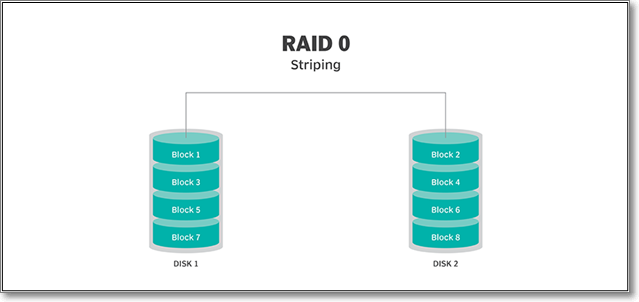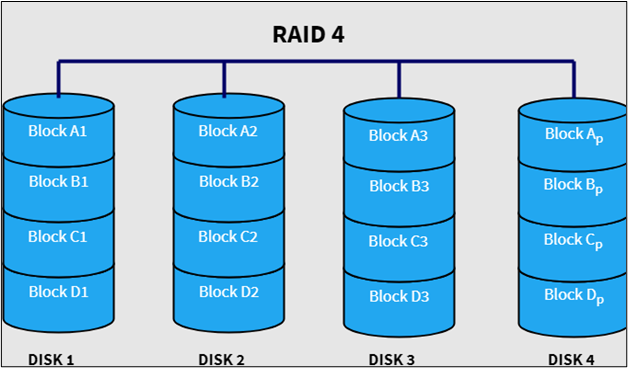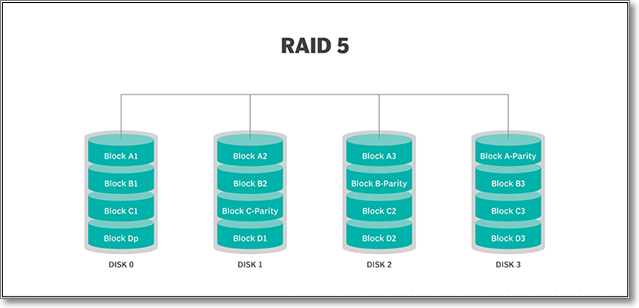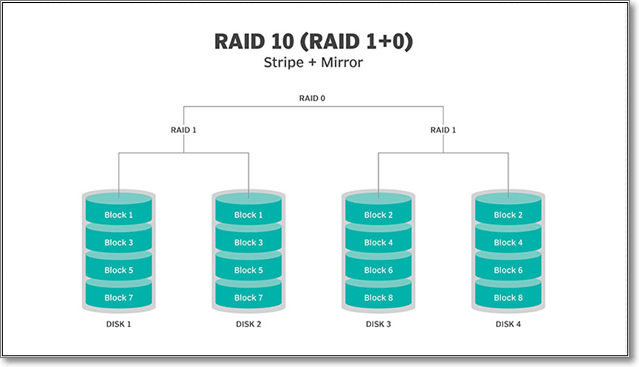Are you struggling with the safety of the data stored on your computer? Have you ever heard about Raid and Redundancy when it comes to choosing the Raid array for your device? If you don't know about this type of technique, you should read this blog where we are going to discuss Raid Redundancy over performance.
In this blog, we will let you know what Raid Redundancy is and how it can influence performance. Let's get started and explore the following sections.
Raid Redundancy Definition
Raid Redundancy is a specific method to store large data on different hard drives to keep it safe. It is done to keep the data safe in case of any drive failure. It will help the user to keep the data safe and work seamlessly with the device.
Overall, you can say that Raid Redundancy is a collection of multiple hard disks performing the same function. There are different types of Raid available in the market based on different levels. You can choose a specific method to store your data by analyzing different Raid levels.
It can help you in improving the performance of your device by resolving issues caused by faults. In a Raid array, if one disk has got problems or becomes fails to process, other disks will keep functioning smoothly. In this way, you can easily use your device and operate it without having problems.
How Does Redundancy Influence Raid Performance?
Raid Redundancy over performance has a comprehensive debate that we can discuss here. But we will keep it short and simple to let you understand how this technique works and can help you in improving performance.
Raid uses one specific technique disk mirroring and disk striping. The main purpose of this technique is to mirror or copy your data on multiple hard disks instead of only one. It will keep your data saved on multiple disk drives instead of a single one.
In this way, it will keep working as per your instructions even when you have to open multiple sections. It will neither slow down your device's processing speed nor let you face issues in accessing your desired file.
By using Raid Redundancy, you can easily access your data with a single glimpse of a second. It will be simple for the processor to search for your data smoothly from different drives. Moreover, it will not let you face issues if one of the disks has got damaged due to any reason.
But Raid will enable you to work smoothly in this regard because other disks will keep working side by side. With this technique, you can't be able to enhance the processing of your personal computer but also work station.
What to Consider When Choosing Raid Redundancy over Performance?
With the above discussion, you have got an idea of how Raid Redundancy over performance will be helpful. But it is still an issue how to choose the Raid Redundancy to improve your device's performance.
For this purpose, you should need to know about different types of this technique. It will help you in choosing the right Raid as per your requirements.
1. Raid 0
In Raid 0 configuration, you will get your data stripped on the hard disk. It will keep your data saved on different disks on a single array. It is based on the Data stripping concept to keep your stored data safe. But this type of configuration does not support redundancy and fault tolerance.

2. Raid 1
In this configuration, two disks are connected properly to keep your data saved on multiple disks for safe browsing. It is based on the concept of Data Mirroring. By using this technique, you will be able to mirror your data simultaneously on different disks.

In simple words, it will copy your data across multiple drives. It will allow you to access your data easily and without interruption even if one of the disks has got damaged. This situation is called Fault Tolerance which can be overcome just by using the Raid 1 configuration.
3. Raid 4
In this Raid type, large stripes are used and connected. Like other Raid Redundancy techniques, it will also store your data on multiple hard disks. With the use of multiple large stripes, it will keep your input/output operations smooth.

It will never let you feel slow processing because of the overlapping of these operations. Also, there are different stripes available to access your data with a single clip.
4. Raid 5
In this configuration, the parity block-level stripping concept has been used. When you will save a single file, it will be stripped on all the disks connected in this configuration. This Raid level is perfect to keep working even when there is one or more disks are not working.

In simple words, it will display the results and keep working smoothly in such conditions. The only issue with this configuration is that it will take much time to rebuild the array if one of the disks have been failed to respond.
5. Raid 10
This Raid configuration is designed by copying Raid 1 and Raid 0 types. It will enable you to get better performance from your device and keep working smoothly. No doubt, it is a modified level that will enable you to experience better results.

But it is much more expensive than any other Raid type available in the market. That is why it is recommended to use this type only when you have a high budget.
Learn More About Raid Redundancy
No doubt, Raid is an advanced technology to save data and keep you safe in case of a disk failure. But you must compare this technology with a regular backup technique. Let us show you a comparison between both of these types as both have the primary advantage to save your data.
Raid vs Backup
Raid allows you to keep working and saving your data in case of failure of one or two disks. But it will not allow you to get your data back if all of your disks have been corrupted. It means that you might be at risk even if you have saved your data using Raid Redundancy.
On the other hand, backup is the way to save your data on any other device by making a copy. It will enable you to make a copy of your device's entire data and save it on any other hard disk. You can use an external storage device like a hard disk, USB, or any other storage device.
With this, your data will be saved even if you have formatted your computer's hard disk. Your data will remain saved on an external device. Also, you can take backup of your data daily, weekly, or monthly just according to your requirements.
But you will not be able to do this using the Raid technique. The reason is that the process is automated and you will not be able to interfere. So, you will not be able to know if any of your files have failed to save with the mirroring technique on multiple hard disks.
Conclusion
While summing up, we would like to say that Raid will be a good choice to keep your data safe and away from unexpected loss. It will enable you to keep data on your device instead of using any external device like a hard disk.
But it would be better to take a backup of your data to deal with any unexpected condition like an instant failure of all hard disks.
Was This Page Helpful?
Daisy is the Senior editor of the writing team for EaseUS. She has been working at EaseUS for over ten years, starting as a technical writer and moving on to being a team leader of the content group. As a professional author for over ten years, she writes a lot to help people overcome their tech troubles.
Related Articles
-
How to Format SD Card on GoPro [Quick Solutions]
![author icon]() Cici/2024-07-01
Cici/2024-07-01 -
Hogwarts Legacy Save File Gone: How to Fix It
![author icon]() Rel/2024-03-15
Rel/2024-03-15 -
(Solved!) Windows Update Stuck on Restarting🔥
![author icon]() Jerry/2024-01-22
Jerry/2024-01-22 -
5 Best S3 Backup Software [Can't Miss]
![author icon]() Rel/2024-01-31
Rel/2024-01-31
EaseUS Data Recovery Services
EaseUS data recovery experts have uneaqualed expertise to repair disks/systems and salvage data from all devices like RAID, HDD, SSD, USB, etc.
